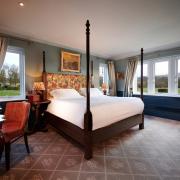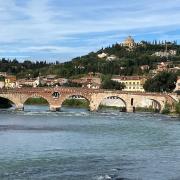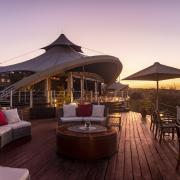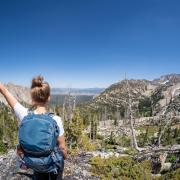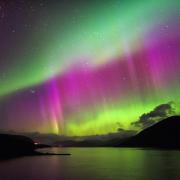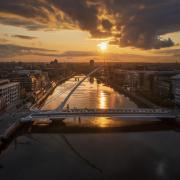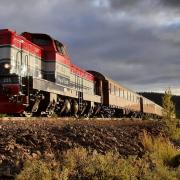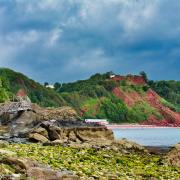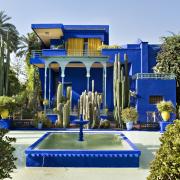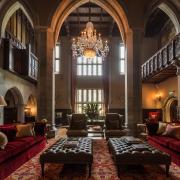Botswana is the perfect place to see the ‘big five’ as Roger Hermiston and Eileen Wise discovered
It was the flick of the white tip of a tail in the tall heart-shaped love grass that gave us excited confirmation. We were on the trail of one of the great beasts of Africa, a leopardess on the move and on the hunt for prey.
Off road and deep in the Botswana bush, with our guide Alex often having to crash his Land Cruiser through the scrambling knobbly combretum trees to keep up, we managed, remarkably, to track ‘Beautiful Lady’ (as we dubbed her) for over an hour.
Her spots were dark, square and irregular, and some of the fur on her yellow back had a reddish-orange tinge. Her swollen belly suggested it had been some time since she last ate, but while on the lookout for a meal, she was content to rest and groom herself in the shade of a bush, just yards away from us.
Being close up and personal with this magnificent animal was such a thrill. Eventually, she led us to a fallen, giant tree, which she first crawled underneath before quickly emerging at the top in full view, casting her gaze disdainfully beyond us to the wide open spaces beyond. With that, she slipped away, and we began the trip back to our camp, exhilarated by the experience.

It was our first full morning’s adventure on a five-day safari in Northern Botswana, staying at three camps run by Great Plains Conservation. It and its sister organisation, Great Plains Foundation – which works hand-in-hand with local communities to preserve the country’s wildlife and fragile eco-system - are the creation of Dereck and Beverly Joubert, South African photographers and filmmakers of over 30 years, and widely acknowledged as one of the hardest-working and most effective couples in the wildlife conservation world.
We encountered the leopardess while staying at the luxurious Selinda Camp, which sits on the banks of the waterway the Selinda Spillway as it enters the Linyati River. But she was just the first of an array of fascinating animals and birds that our indefatigable guides Alex and Lizzie directed us towards in two drives that day.

Out in the 130,000-hectare private Selinda Reserve, we watched groups of stately giraffes nibbling the tops of trees: we admired a wide variety of elegant antelopes – from the smaller impala and red lechwe, through the tsessebe and kudu and then up to the larger sable and waterbuck – who would stare at us curiously before leaping off into the bush: and at sunset, we enjoyed a real treat, when an unusually large grouping of vultures in the trees provided the clue to locating a pack of laughing spotted hyenas settling down for supper over a much-chewed hippo carcass, one of them making remarkably short work of its tough, tarpaulin-like skin.
On this trip, there would be close encounters with even bigger beasts – a hippo, crunching the grass at night just ten yards away from our veranda as we were enjoying dinner. And at our second camp, Duba Explorer on the edge of the Okavango Delta, we faced the unusual experience of a roadblock on the path back to our tent – in the form of a great, hulking bull elephant. Thankfully he was a benign creature, not giving us a second glance as he tucked into the undergrowth for his evening meal.

Botswana’s successful tourism strategy is based around the maxim ‘high quality, low impact’ – which Great Plains certainly is with a scattering of extremely comfortable safari camps, situated mainly around the Okavango Delta, with welcoming staff and superb guides to bring you the incredible array of animals and birds that exists here.
We reached our other Great Plains camps – Duba Explorer and Duba Plains – by helicopter, our young, calm pilot Aron dipping low over the delta to give us our wondrous birds-eye view, observing the flapping of the big ears of the elephant and the horns of the surging water buffalo herd.

The food was delicious at all venues and the accommodation excellent. Typically, inside a huge canvas tent would be polished wooden floors on which stood a supremely comfortable king-sized bed, with a ceiling fan to keep us cool and a mosquito net rolled out around it at night. Sliding wooden doors opened onto a spacious ensuite bathroom with double basins and a copper tub. On the verandah there was a plunge pool, sofa and chairs – with glorious views out into the bush.
We are no ‘birders’ but we enjoyed looking out for – and keeping a count – of some of the hundreds of colourful species the country boasts (we reached 144). A beautiful little light blue woodland kingfisher took up residence on the handrail of the stairs leading to our tent at Duba Explorer. Out on our drives we spotted not one, but six eagles, the African Fish with its white head, chest and neck the most splendid.
As Miriam Makeba said, ‘Africa has her mysteries and even a wise man cannot understand them. But a wise man respects them’. We left Botswana privileged to have encountered a good slice of that African wonder.
For more information visit greatplainsconservation.com




